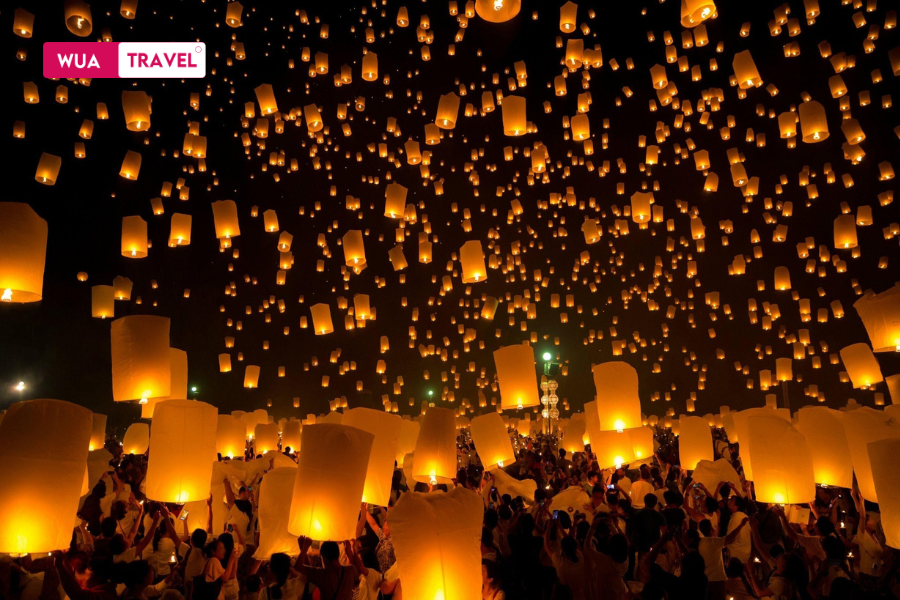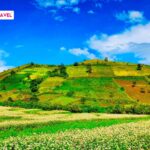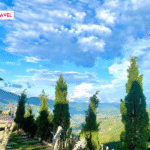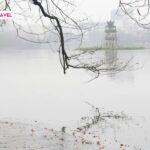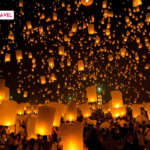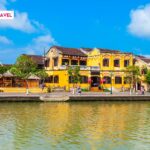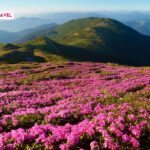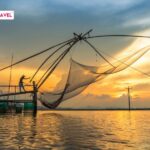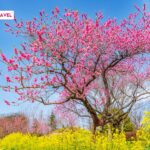I still remember very clearly the trip to Ha Giang in early August. After a sudden afternoon rain, the entire rocky plateau seemed to wake up with sunlight shining on the green corn fields. The humid air settled down, leaving behind the strong scent of mountain soil and a thin mist drifting through the valley. That was the first time I sat drinking coffee in a small cafe next to Ma Pi Leng Pass, watching the clouds drift like a river in the sky. At that time, I realized: August is not as “bad” as many people think.
August brings with it sudden rains, dry sunny days, and even heart-wrenching moments – like the evening in Hoi An, when I happened to walk into a Vu Lan ceremony. Candles were released on the Hoai River, the sparkling light reflecting on the silent faces of locals and tourists. The scent of incense, the sound of temple bells, and the roses on my lapel reminded me of my mother – and of gratitude, of family, amid seemingly endless journeys.
It’s true that August can be hot, rainy, and sometimes unpredictable. But if you understand Vietnam – understand the characteristics of each region – August opens up countless memorable experiences: the central coast is still blue and clear, the Northwest is entering the rice season, and the festival atmosphere in Hoi An and Hue is still bustling with colorful flowers.
Overview in August
August is a busy time for domestic tourism in Vietnam, when students are still on summer vacation and many families are taking the opportunity to take their last trips before the new school year begins. Popular destinations such as Da Nang, Nha Trang, Da Lat or Sa Pa are often fully booked on weekends, especially in high-end resorts and coastal resorts
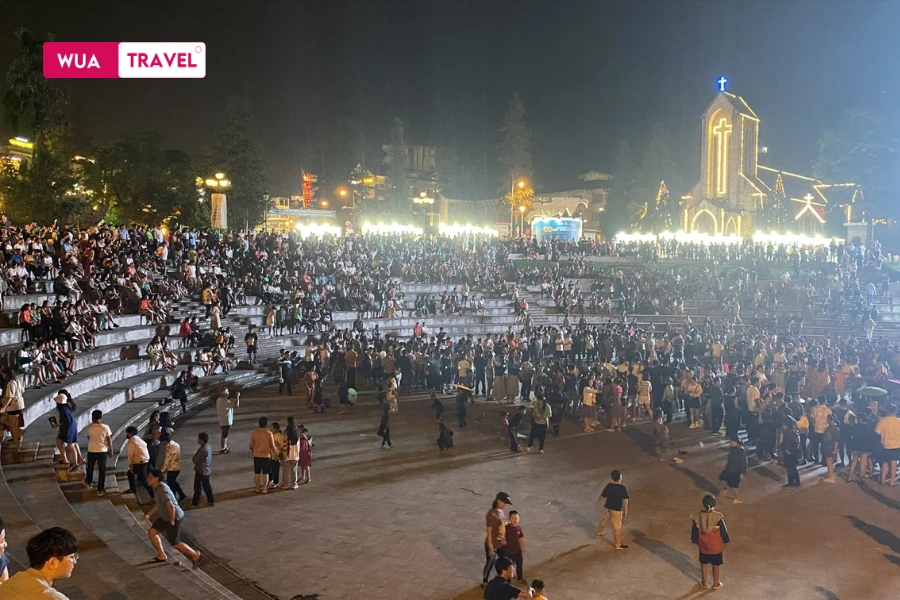
For international tourists, August is a time of two distinct trends: European and American tourists often avoid Southeast Asia because of the humid and hot weather, while visitors from Asian countries such as Korea, Japan, and Thailand increase sharply – partly because of the summer vacation, partly because they are used to this type of weather and are attracted by the summer festivals, fresh food and unique culture of Vietnam.
Although considered the “domestic peak” time, if you know how, you can still enjoy the strengths of August:
- Nature is full of life: After the first rains of the season, the landscape everywhere seems to be washed clean – the trees are greener, the mountains are fresher, the air is fresher and the sky after the rain always creates spectacular scenes.
- Cultural events – colorful festivals: This is the month of traditional festivals such as Vu Lan, lantern parade, summer activities for children, book fairs, and food festivals in big cities.
- Fruit season is richFrom durian, rambutan, mango, longan to highland specialties – August is a bumper crop for those who love to explore local cuisine.
However, it is impossible not to mention a few challenges:
- Service prices increased by 20–30%,especially air tickets, hotels in tourist hotspots.
- Difficult to book on weekends, especially coastal resorts and cool mountain areas.
- Unstable weather, HaveIt can be sunny and then suddenly rainy – this requires you to be flexible in your schedule.
Outstanding travel trends in August
Faced with the above challenges, August travel trends are gradually changing towards more flexibility and personalization:
- Staycation – travel close to home, staycation: Many families choose to spend the weekend at suburban homestays, villas near the city or resorts within a radius of 100km.
- Mountain retreat – escape the heat in the mountains: Destinations such as Sa Pa, Moc Chau, Da Lat, Ha Giang are popular thanks to their cool air, wild scenery and not too far from the center.
- Cultural tourism – cultural tourism: Exploring heritage, participating in folk festivals and community activities are becoming the choice of many young people who want to “travel in depth”.
- Food tourism – summer culinary journey: August is a great time to enjoy local dishes such as Western fish noodles, Hue sweet soup, Central seafood or seasonal fruit specialties.
Vietnam Weather in August
August is a sensitive transitional season in Vietnam. Each region has its own “mood” of weather – the North is humid and erratic, the Central region is dry and sunny, and the South is still flooded with short but persistent tropical rains. Choosing a destination this month cannot be arbitrary, but should be based on the weather characteristics of each region to optimize the experience.
The North Vietnam Weather in August
In Hanoi and the Northern Delta, August is extremely hot and humid. The average temperature ranges from 28–35°C, but the actual feeling is easy to reach 38–40°Cdue to high humidity (75–85%). The storms showers and thunderstorms in the evening It happens frequently, making it necessary to move around the city flexibly. However, the mornings and evenings still have pleasant moments – especially when you find an old cafe in the old town to shelter from the rain and watch the hustle and bustle of people.
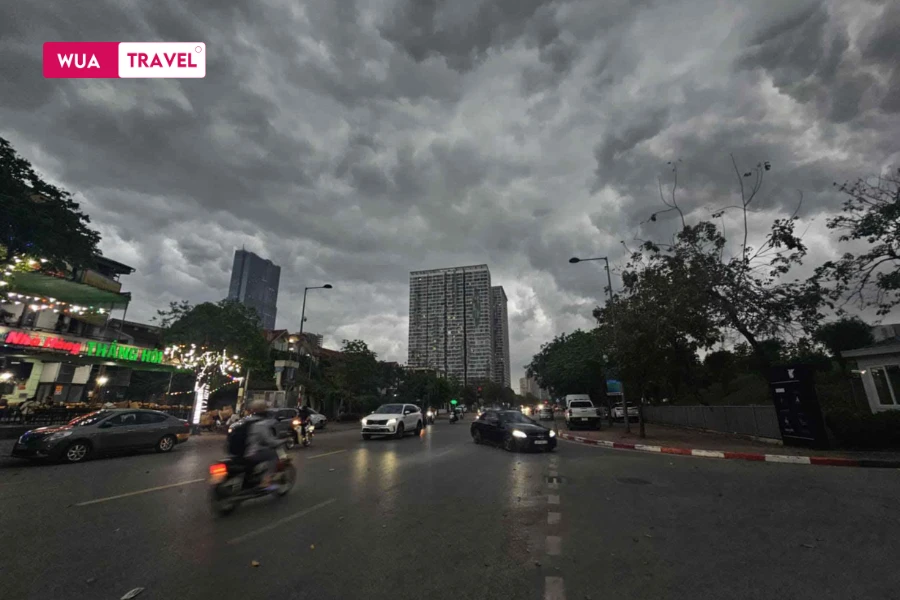
In contrast, the northern mountainous region as Sapa, Ha Giang is a completely different world. The temperature ranges from 18–25°C, cool air, majestic and vibrant landscape after heavy rains. However, please note: fog appears a lot, the pass can be slippery, especially after rain, so prioritize non-slip trekking shoes and check the weather carefully before each journey.
The Central Vietnam Weather in August
From Hue to Da Nang August is the peak of the Central region’s heat. Temperatures can reach up to 38°C, low humidity (65–75%) creates a dry feeling, especially when the Lao wind blows. If you can stand the sun and plan your schedule properly (go early, take a lunch break indoors), then the Central Coast in August is a great choice clear sky, warm sea, little rainand summer festivals are still in full swing.
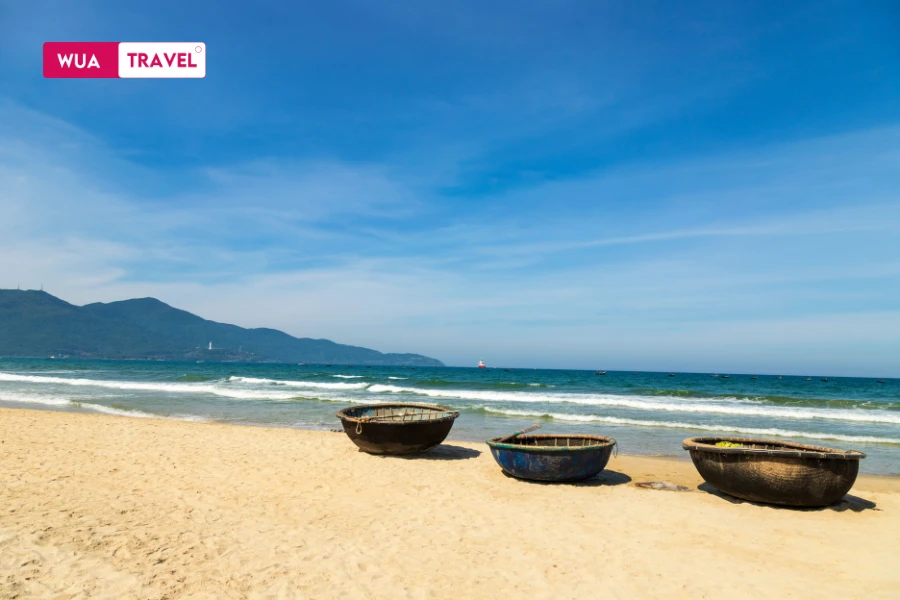
Area South Central Coast like Nha Trang, Quy Nhon have a little more pleasant weather 28–35°C, average humidity 70–80%, rainfall is quite low. The ideal time to explore the island, snorkel, and enjoy the blue sea and white sand. However, keep a close eye on the weather forecast, because low pressure or storm may appear at the end of August.
The South Vietnam Weather in August
In Ho Chi Minh City and the Mekong Delta, the weather in August is quite typical with the pattern of “sunny morning – rainy afternoon”. Temperatures fluctuate26–32°C, high humidity (80–85%) but not too stuffy thanks to the southwest monsoon bringing gentle moisture.The rains often come quickly, are heavy and then stop quickly., does not affect the schedule too much if you prepare a raincoat well and are ready to be flexible.
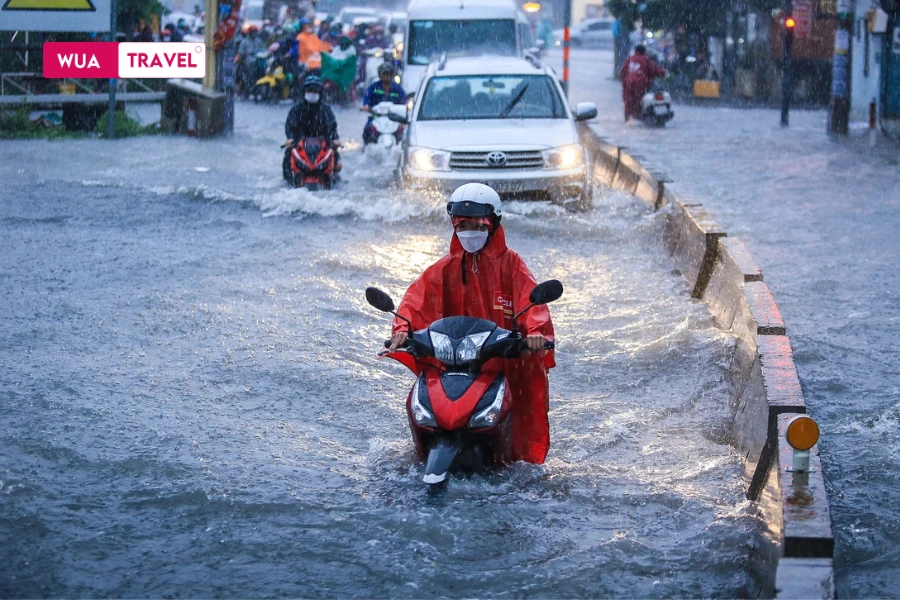
Islands like Phu Quoc and Con Dao are still good options if you want to escape the city. Despite the high rainfall (200–300mm), the mild sea air, stable temperatures (26–30°C), and clear mornings still prevail. Plus points: less crowded than in high season, often better deals.
Quick comparison of weather in three regions in August
| Region | Temperature | Rainfall | Difficulty (travel) | Suitable for type of tourism |
| North (plain) | 🔥🔥🔥 | 🌧️🌧️🌧️ | ⭐⭐ | Indoor, city tour |
| North (mountainous region) | 🔥 | 🌧️🌧️🌧️ | ⭐⭐⭐ | Trekking, nature retreat |
| Central (coast) | 🔥🔥🔥🔥 | 🌧️ | ⭐⭐⭐ | Sea, cultural discovery |
| South (cities & islands) | 🔥🔥 | 🌧️🌧️ | ⭐⭐⭐⭐ | All activities, diverse experiences |
Suggest: If you love the sea, choose the Central region; if you like mountains and forests and the cool, fresh air, the Northwest is the place to go; and if you like dynamism and flexibility, the South is still a safe and colorful choice.
Ideal destinations in August
August is not the “perfect” time if you just look at the weather report, but if you are observant and selective, this is the month that brings the most unique experiences of the year – from the cool air of the highlands, the blue sea of the Central region to the calm water of the rivers. Below are the destinations that I have been to and want to suggest to you, not only because of the beautiful scenery, but because they are really“score”in August weather conditions.
The North Vietnam
When it comes to the breathtaking landscapes of northern Vietnam, few places are as iconic as Sa Pa and Fansipan Peak. Misty mountains, ethnic culture, and sky-high views await those who venture north.
Sa Pa & Fansipan Peak
While the plains are struggling with heat and sudden rains, Sa Pa enters its most pleasant period.Temperature range 18–25°C, cool day and night. If you go inend of august, you will begin to seeyellow terraced fields, one of the most impressive landscapes of the Northwest.
Although rain often appears in the evening, just bringlight raincoat, non-slip shoes, you can still trek to Cat Cat village, Ta Van or climb Fansipan by cable car. The feeling of sitting in a small shop, listening to the rain falling by the wooden window is truly unforgettable.
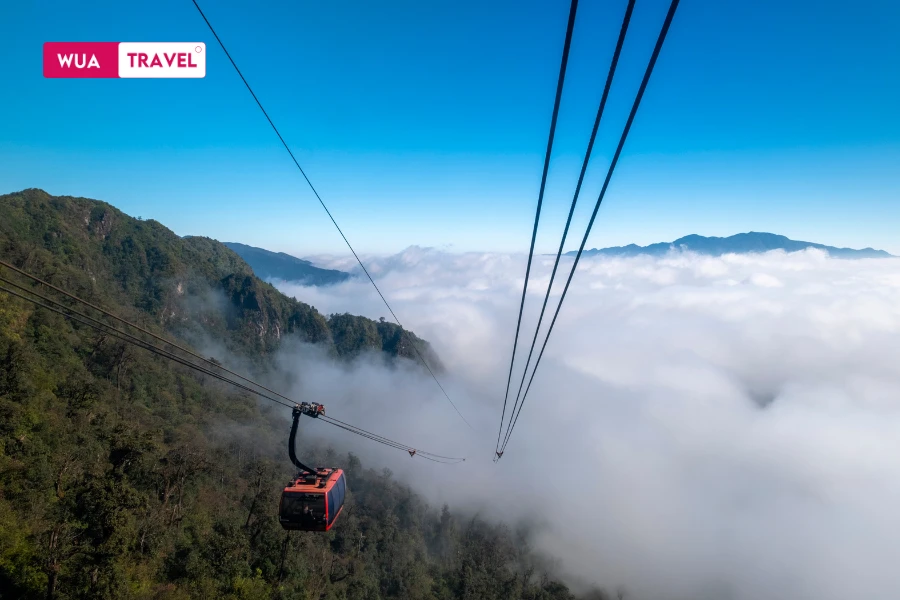
Ha Long & Cat Ba
The Northern Sea in August is not always sunny, butEarly mornings are usually very nice and less rainy., sea water temperature about28–30°C, ideal for activities such as swimming, kayaking, and visiting the bay by yacht.
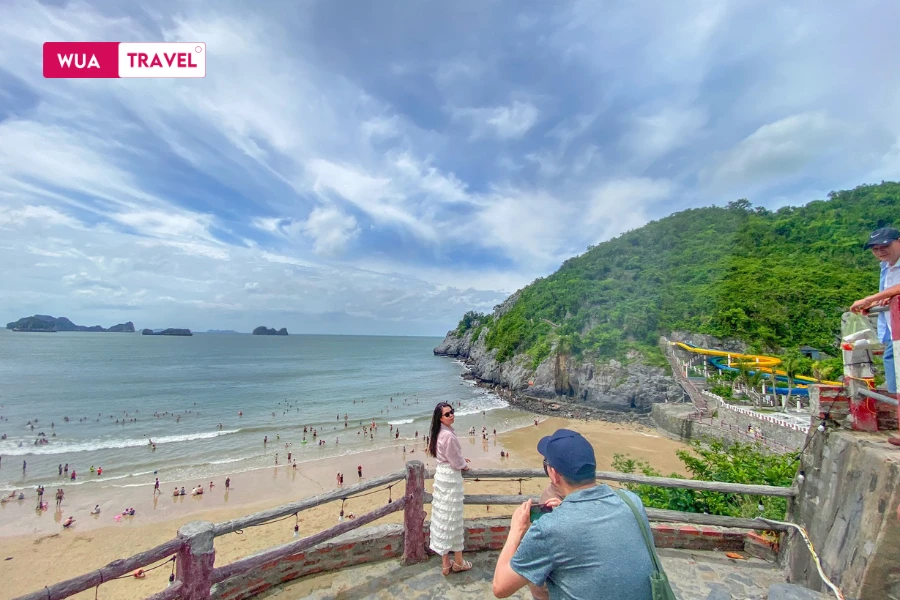
A little tip:Please choose a tour departing from 6am–7am, the time from dawn to noon is the “golden hours” for experiencing the bay. If the weather is unstable, you can choose to stay at the resorts on Tuan Chau island or explore the limestone caves – where it is still cool and less affected by rain.
Hanoi
Hanoi in August can be rainy and hot, but it is the ideal time to explore indoor spaces:museums, old coffee shop, art centeror simplyair conditioned shopping mall.
In the evening, when the streets quiet down, is the timeOld Quarter, Hoan Kiem Lake or Trang Tienbecome more romantic than ever. Don’t miss the opportunity to enjoy street food such as bun cha, nem ran, longan and lotus seed sweet soup – they are the culinary “sediment” that is hard to find anywhere else.
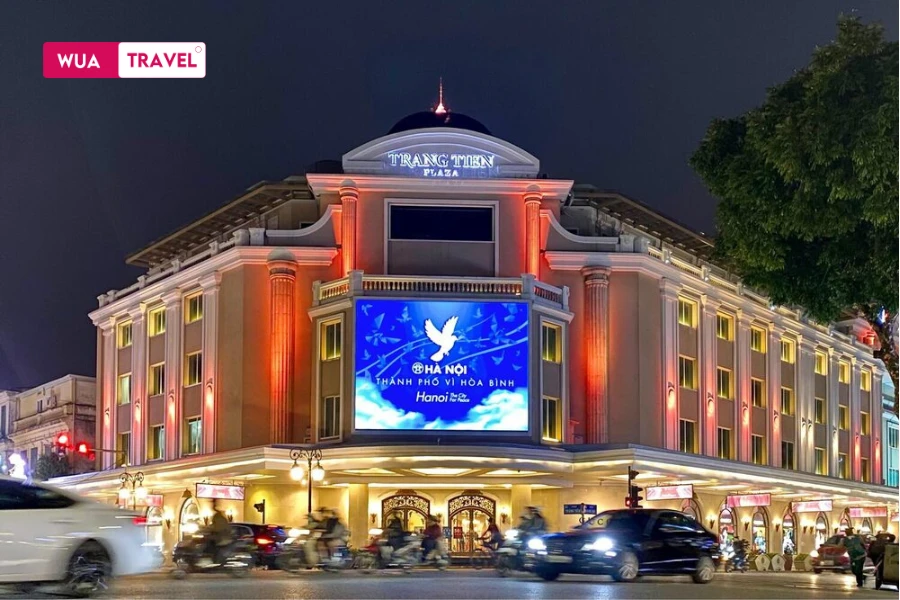
Central region
And when it comes to capturing the charm of Central Vietnam, no place does it better than Hoi An. With its lantern-lit streets and timeless architecture, this ancient town is a journey into the soul of Vietnam.
Hoi An
August, Hoi An is usually little rain, beautiful sunshine, very suitable for cycling around the old town, visit Tra Que vegetable village, or swim at An Bang beach in the morning. Avoid going during these hours.11h–15h, because the sun in the Central region is quite harsh.
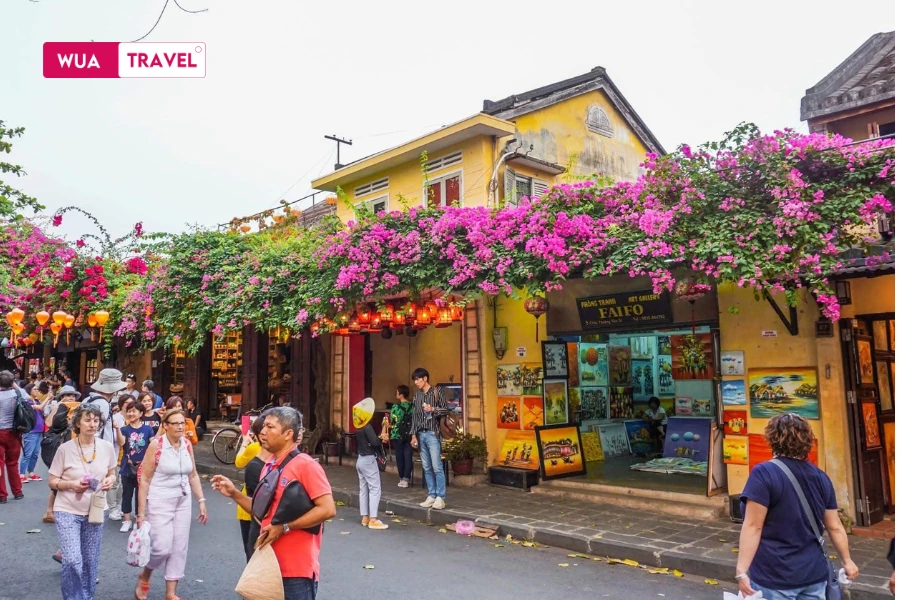
In the afternoon, visit a small tailor shop in town, sip a glass of water on the banks of the Hoai River, or join a cooking class at a local’s house – this experience not only “cools off” but also helps you understand more about Quang culture.
Hue
Hue in August is very… Hue – hot, slow and full of thoughts. But it is that very sunshine that makes…mausoleum, citadel, Vong Canh hill or Huong riverbecome more prominent, brilliant and profound.
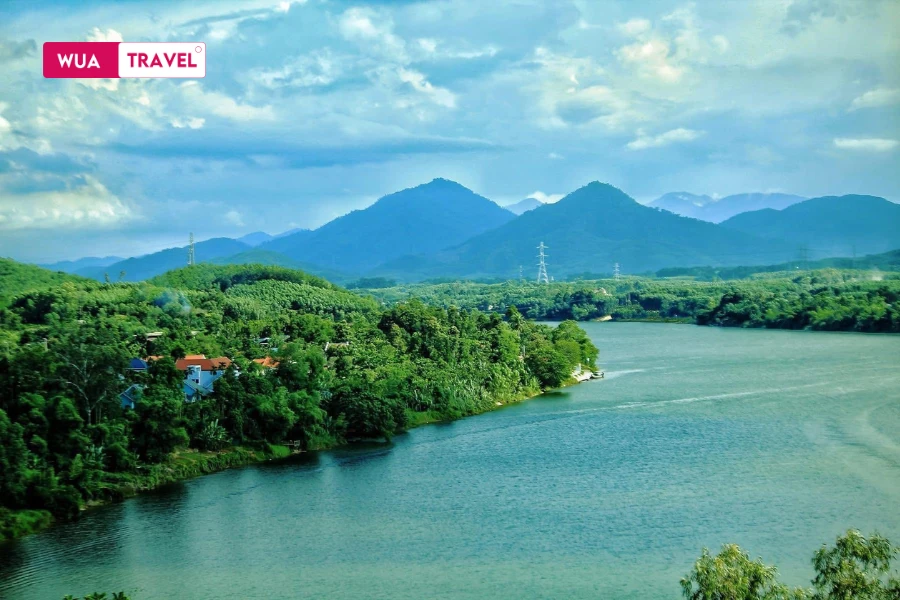
If you go early in the morning or late in the afternoon, the city has an ancient, dreamy beauty like an old painting. Don’t forget to prepare wide-brimmed hat, sunshade, and especially a gentle mindset to fully feel the depth of the ancient capital’s culture.
Da Nang & Ba Na Hills
One of the most valuable combos in Central Vietnam in August isMy Khe beach – Ba Na mountainIn the morning, you can swim, surf, or simply lie on a chair reading a book under the shade of a coconut tree. At noon, go to Ba Na Hills – where there istemperature only 20–25°C,You will enjoy fresh air, European style landscape and exciting indoor games.
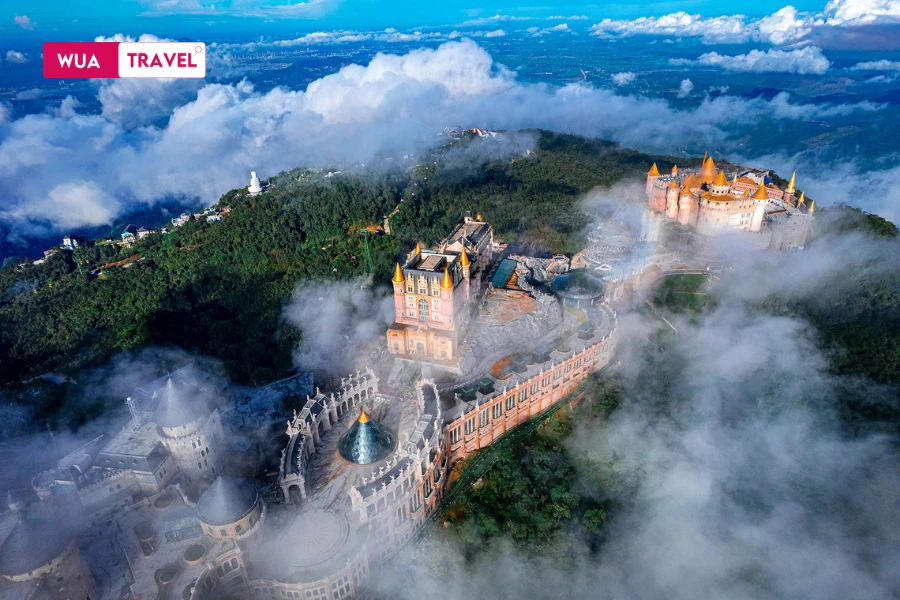
The South Vietnam
And if there’s one place that captures the energy and diversity of southern Vietnam, it’s Ho Chi Minh City. A blend of old and new, chaos and charm—this metropolis never fails to leave a mark.
Ho Chi Minh City
Although it rains a lot in the afternoon, mornings and evenings in Saigon in August are extremely pleasant. Choose indoor activities such as visiting the Independence Palace, the Fine Arts Museum, shopping at Takashimaya, or simply sitting in a cafe watching the rain in Thao Dien.
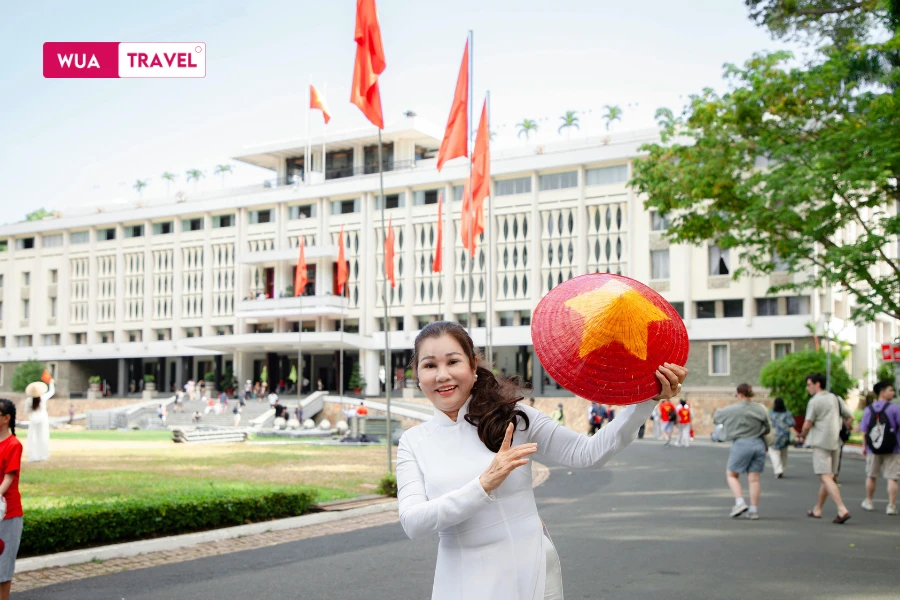
When the sun sets, the city lights up with street food at Ben Thanh Market, Bui Vien Western Street, or unique rooftop bars – Saigon is always vibrant and full of surprises.
Mekong Delta
August marks the transitional season in the West, when the rice fields give way to the flood waters. You can experienceCai Rang floating market, rowing boat in Tra Su cajuput forest, or take a boat to watch the sunset on the Hau River.
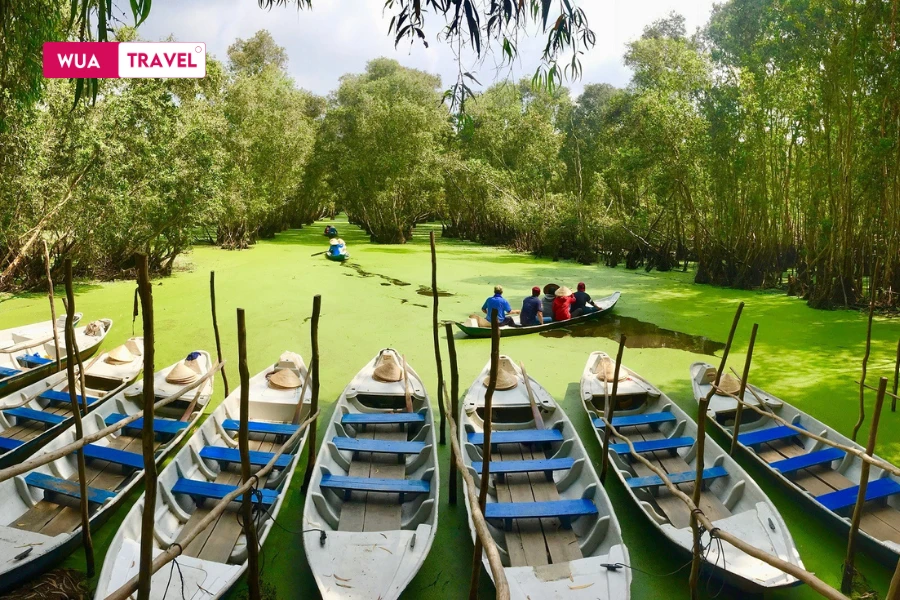
The air on the river is much cooler than on the shore, the rain comes and goes gently – enough to make the trip romantic and slow, true to the West.
Phu Quoc & Con Dao
Even though it is the rainy season, Phu Quoc and Con Dao still have beautiful sunny days in August, especially in the morning. The clear sea water, calm waves, and not too many visitors help you have a rare private space.
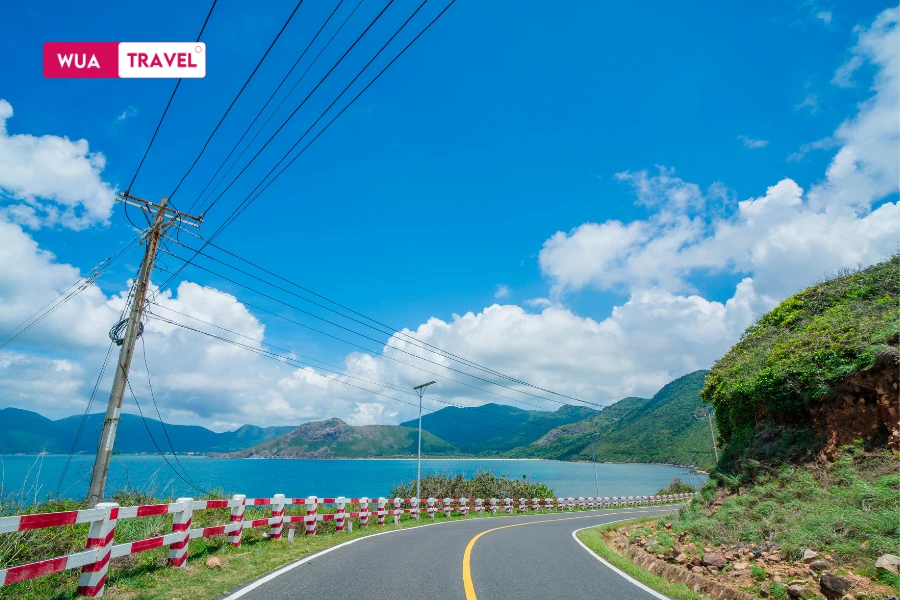
Note: always check the weather forecast 1-2 days before going to the island, bring thin raincoat, waterproof bag for electronics, and be flexible with your schedule – because if you’re lucky, you’ll find the sea in August… so beautiful you’ll want to come back right away.
Suitable travel activities in August
August in Vietnam is a transitional season with quite “fickle” weather: sudden showers in the North and South, harsh sunlight at noon in the Central region. But that opens up two distinct directions for tourism: those who like to exercise can choose outdoor activities in the morning and late afternoon, while those who want to relax gently still have a lot of indoor activities to choose from. Below are suggestions that I have tried and found extremely suitable for the weather in August
Outdoor activities to experience
If you’re craving both adventure and unforgettable views, trekking in Vietnam’s high mountains offers an experience like no other. Let’s explore why this activity tops the list for outdoor lovers.
Trekking in high mountains
If you want to exercise, enjoy nature and cool climate thenThe Northwest is paradise in AugustIn particular, the regions such as Ta Xua, Y Ty or Sa Pa – Fansipan are entering the cloudy season, the rice ripens early and the air is extremely pleasant.
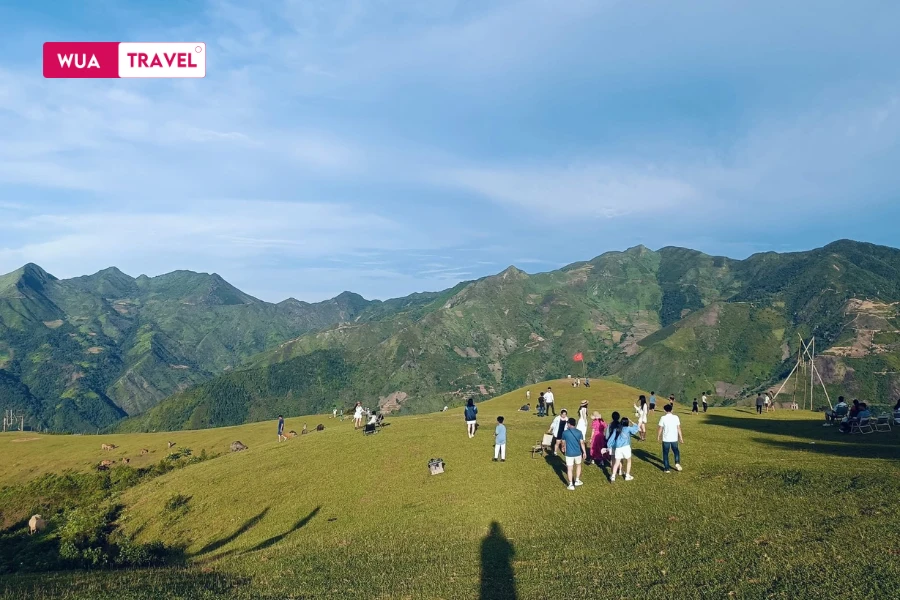
Tips: Go early in the morning (6am–9am), bring a thin raincoat, and remember to check the trekking route because some sections can be slippery due to rain.
Cave exploration (Phong Nha – Ke Bang, Son Tra mountain
Caves are the perfect “shelter” for August – not only cool but also safe from the wind and rain. Adventure tours such asDark Cave, Swallow Cave, Tu LanNot only beautiful but also very suitable for those who love light adventure.
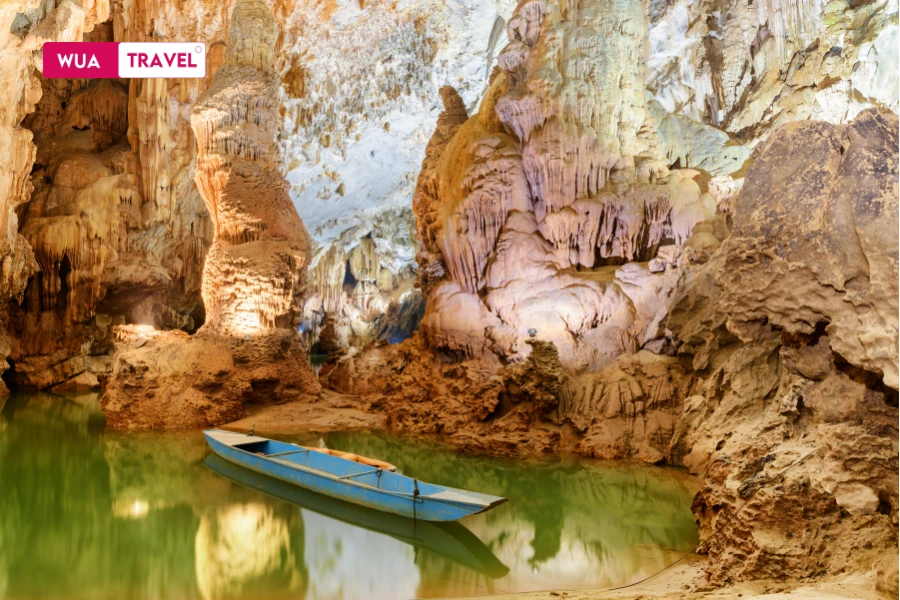
In Da Nang, you can explore caves in Son Tra peninsula, combined with walking to see the Douc Langur.
Water sports – Still sunny for surfing and diving
Although it is the rainy season in some places, Mui Ne, Nha Trang and Phu Quoc There are often beautiful “sun windows” in the morning.
- Mui Ne: Kitesurfing or light morning surfing (7am–10am).
- Nha Trang: Snorkeling, SUP at Hon Mun or Ninh Van Bay.

River tour – A “cool” way to travel
Instead of wandering in the sun, boating on the river is a very reasonable choice:
- Mekong Delta: Paddle through the mangroves or floating markets.
- Hue: Watch the sunset on the Perfume River, listen to Hue songs in the evening.
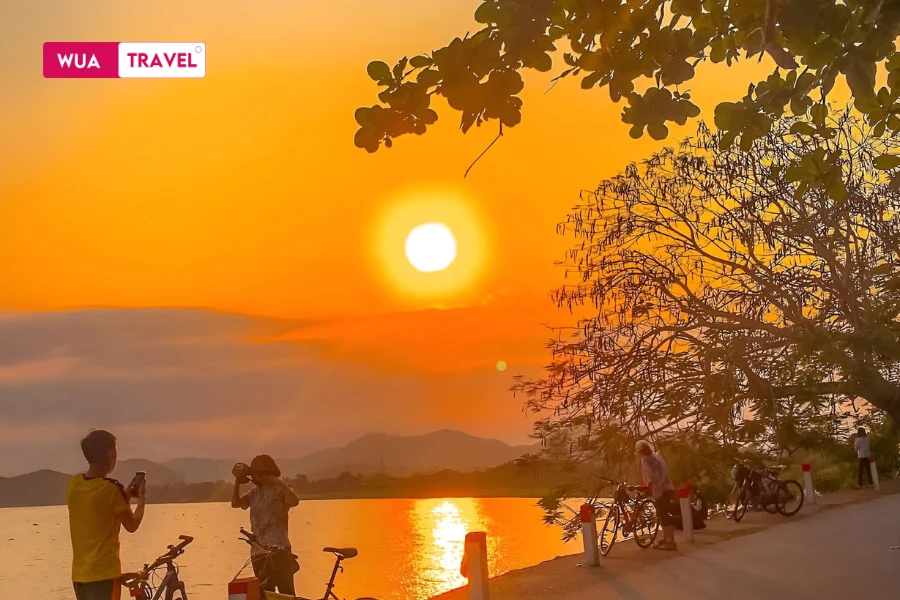
Indoor Activities
When the weather keeps you indoors, why not let your taste buds do the exploring? A food tour is the perfect indoor adventure—rich in flavor, culture, and local stories.
Food tour
From Hanoi to Ho Chi Minh City, August is the time you can explore local cuisine without worrying about the heat. In the evening, when the weather is mild, it is a great time to go to the night market, eat pho, bun cha, hu tieu or street snacks.
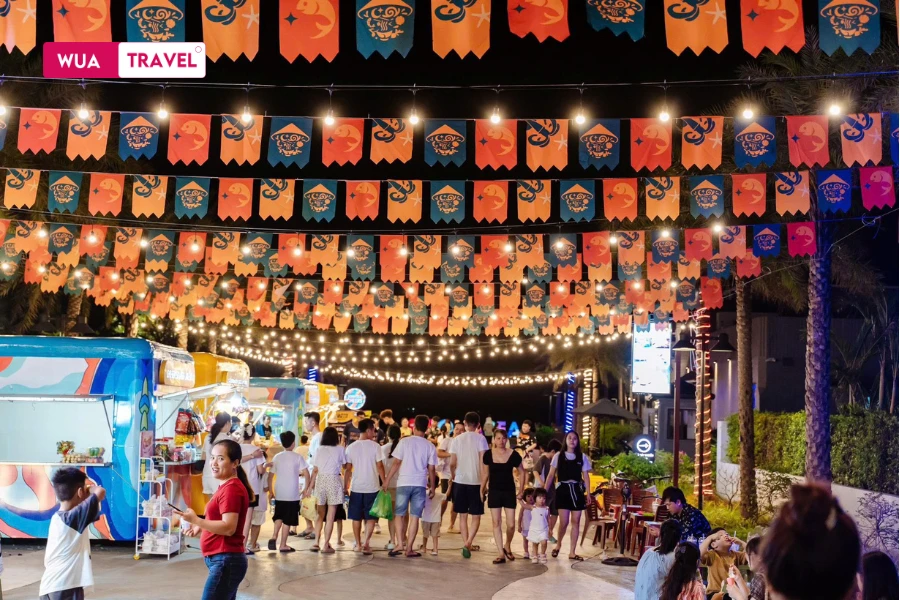
Shopping & experience in the mall
During the hot sunny hours from 11am to 3pm, you can take full advantage of your time atVincom, Aeon Mall, Takashimaya, a place that not only has cool air conditioning but also many services such as watching movies, eating, shopping.
Museums & Covered Monuments
In Hanoi, you can spend half a day visiting Museum of Fine Arts, Hoa Lo Prison Relics, or Temple of Literature- where there are many shadow sancient tree
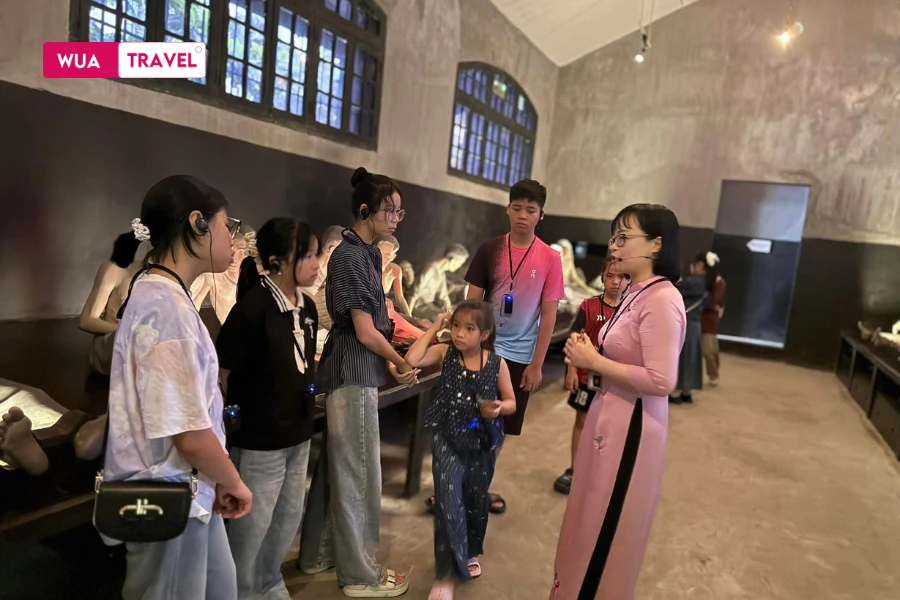
In Hue, the mausoleums like Tu Duc and Minh Mangsubject You have a space to shelter from the rain, combined with a cool green landscape.
Spa & wellness – Heal body and mind
After a morning of trekking or walking, an afternoon steam bath, foot massage live Hoi An, Da Nang or Ho Chi Minh City would be ideal “rewards”. I tried the spa – coffee – book combo in Hue, and really… just wanted to stay a few more days.
Sample Itinerary by Time Frame
Instead of “packing a full schedule”, you should divide your time into time slots to make the most of the weather during the day. Here is a suggestion I often apply for my August travel itinerary:
| Time frame | Suggested suitable activities |
| 6h – 9h | Trekking, cycling, early beach trips, SUP |
| 9h – 11h | Covered sightseeing, shady photo shoot |
| 11h – 15h | Lunch, rest, spa, indoor shopping |
| 15h – 18h | Visit the museum, explore the afternoon cuisine |
| 18h – 22h | Food tour, bar/pub, night market walk, river cruis |
August is not a month for rushed travel, but rather an ideal time to slow down, be selective about your activities and enjoy every moment.If you know how to “read” the weather during the day, then almost anywhere in Vietnam you can find a memorable experience.
August Food & Drinks
August, the heat and high humidity sometimes make you feel lethargic – but it is also the time when your taste buds become more sensitive to cool, light, easy-to-eat dishes. For me, an August travel itinerary is never complete without a glass of sugarcane juice at noon, a bowl of smooth grapefruit sweet soup in Hue or cool fruit skewers wandering around the corner of Saigon market. Each region has its own “symphony of taste” – and below are the flavors you should not miss.
Typical summer dish
Summer flavors vary across Vietnam, and in the North, they take on a delicate, refreshing character. Let’s explore what makes northern summer dishes so unique and satisfying.
The North Vietnam
August in Hanoi can be humid and hot, but traditional dishes soothe it all.
- Black bean sweet soup, lotus seed sweet soup, tofu pudding– cool, slightly sweet, feels “lighthearted” when eaten.
- Trang Tien Ice CreamgoodflantdoSmall shops in the old town always remind me of my childhood memories.
- Cold water dumplings– a special version only available in summer, soft and chewy, with the aroma of roasted sesame and cool ginger syrup.
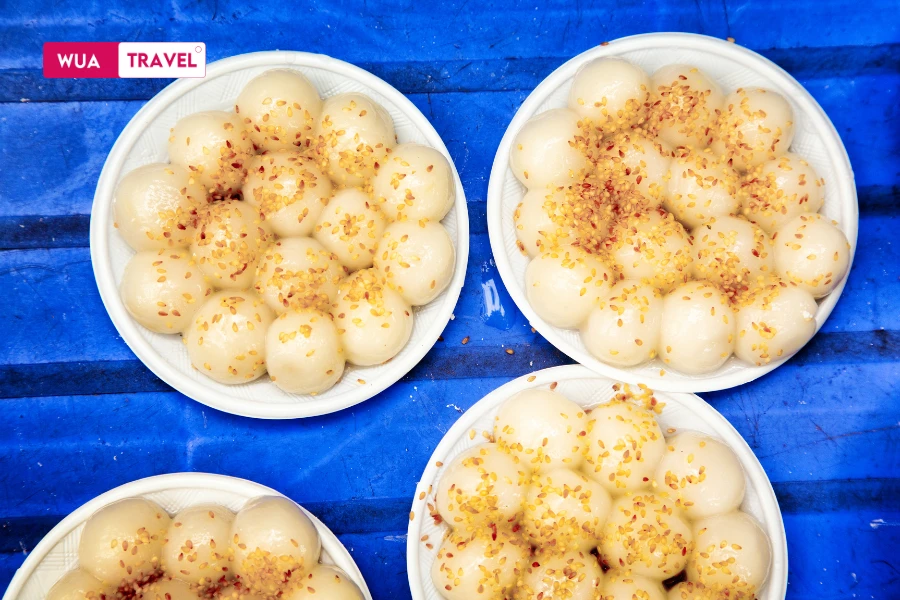
The Central Vietnam
On the way to Hue or Hoi An in August, I always look for traditional desserts and cakes:
- Hue grapefruit tea– charcoal sweetnessh, the grapefruit peel is slightly chewy, very suitable for the afternoon.
- Banh beo chen, banh it la gai– light on the stomach,just the essence of Central Vietnam.
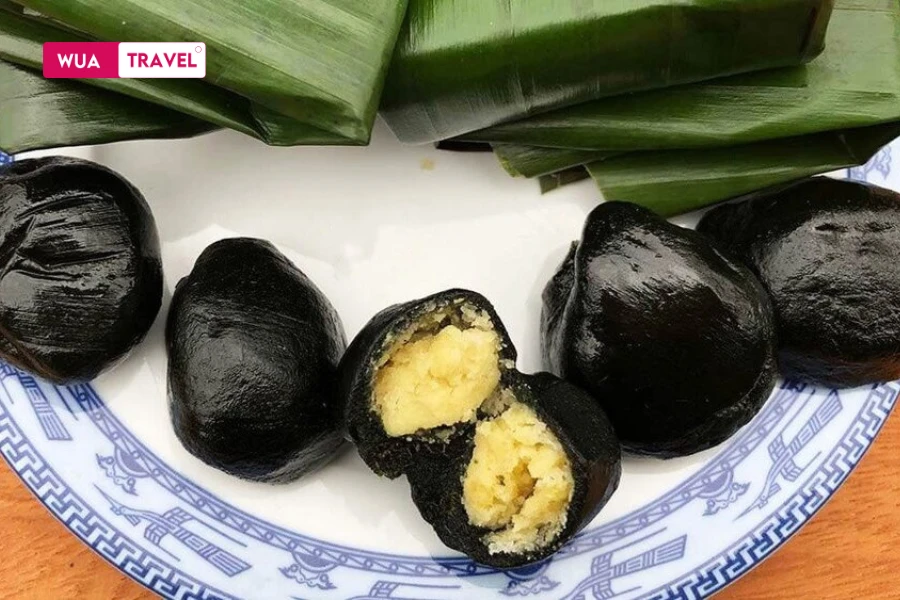
- In the evening, try a bowlHue beef noodle soup or Hoi An Cao Laualso fishch to “cool off the mind”.
The South Vietnam
Nowhere is there such an abundance of fruit as the South in August – from custard apple, pineapple, mango, rambutan, mangosteento the glassesThai tea with full toppings.
- Every time I visit Ho Chi Minh City, I cannot help but visit a “favorite” sweet soup shop in District 10 – where there are everything from green bean sweet soup to pomegranate jelly sweet soup.
- Specialapartfruit yogurtin the areasNight burps like Bui Vien or Da Lat are dishes that I think everyone should try at least once.
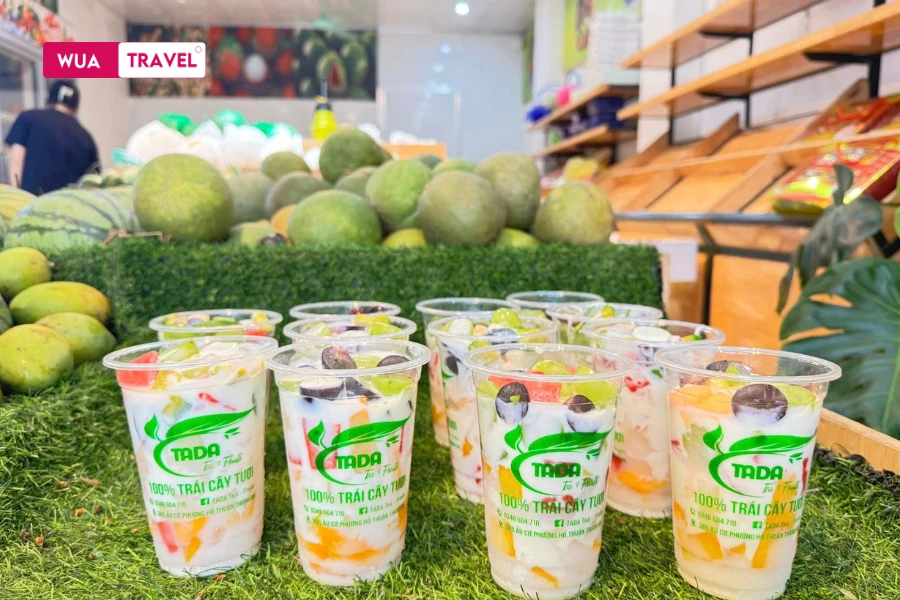
Refreshing drinks
In August, Vietnam’s weather will make you sweat after just a few minutes of walking. And there’s nothing more refreshing than a glass of local cool drink:
- Fresh coconut water: Easy to find from the central beaches to the southern streets, both naturally replenishing electrolytesquiet, cools quickly.
- Iced tea – the unofficial “national drink”: In Hanoi, just a few thousand for a cool glass of iced green tea, often accompanied by a roadside story.
- Vietnamese iced coffee: Bold, strong, yet captivating. If you’re in Saigon, find a roadside café, order a glass of iced milk coffee – and sit back and watch the people flow by.pass
- Fruit smoothie: I highly recommend the avocado durian smoothie in Da Lat, or the mango passion fruit smoothie in Nha Trang – both rich and fragrant, and helps you “recharge” quickly.
- Hanoi Draft Beer: An experience not to be missed. No need for luxury, just a plastic table by the roadside, a few small chairs, and a cool glass of beer in the summer heat.
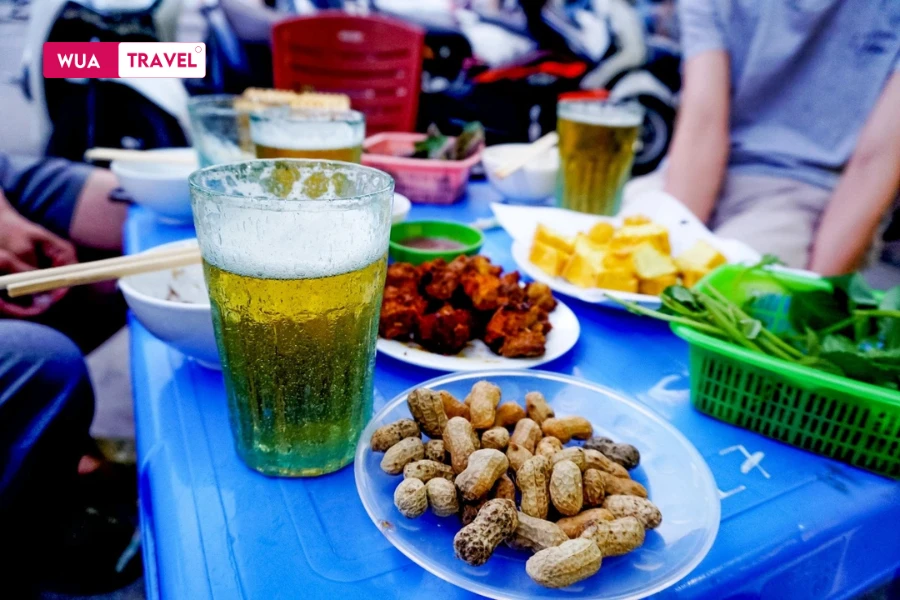
Safe Eating Experience
Vietnamese street food is very rich, but when going in the hot season – you need to be a little more alert to ensure your health:
- Choose a crowded, clean restaurant: Good signs include lots of locals eating, tables and chairs that are wiped down regularly, and a visible kitchen counter.
- Drink bottled water or boiled filtered water: Avoid drinking tap water or other untreated water, especially in rural areas.
- Be careful with ice cubes: If unsure, ask for “no ice” or use only large ice cubes (usually the processed kind).
- Avoid eating raw seafoodon very hot days or when freshness is uncertain – especially in areas not near the sea.
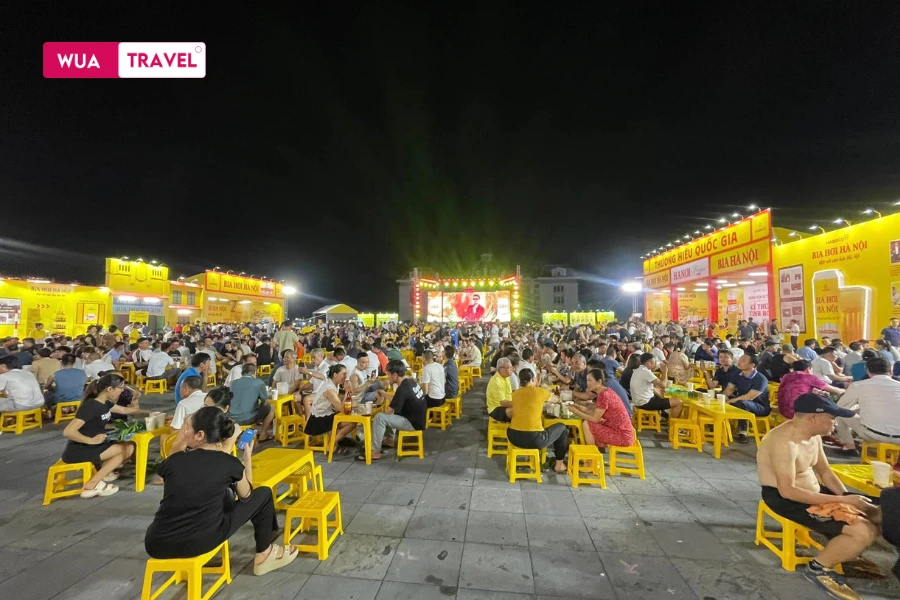
August is the time when Vietnamese cuisine reigns as a smooth harmony of sweet – sour – light – fatty flavors. AndMore than just delicious food, I believe it’s an opportunity for you to deeply experience the local culture: from the story of the tea seller, the smile of the coffee shop owner to the way Vietnamese people enjoy each flavor in the summer sun.
August Travel Tips
August in Vietnam brings both great opportunities and no small challenges: sudden rains in the North and South, scorching heat in the Central region, plus the peak domestic tourism season. But if you prepare well and are flexible in your schedule, August can still be a great month.“golden moment”for the journey to explore the S-shaped country. Below are the bloody experiences that I have drawn after many trips in the rainy and sunny season of August.
Pack wisely – “Enough but not too much”
Bringing the right equipment not only helps you feel comfortable but also reduces risks when the weather changes unexpectedly.
What to bring:
- Light, absorbent clothing: Prioritize cotton or linen– cool, easy to wash and dry quickly, ideal if you are traveling for a long time.
- Thin raincoat, foldable umbrella: I always bring a poncho-type raincoat – which can cover my backpack. As for umbrellas, I choose the compact, lightweight, windproof type.
- Non-slip slippers or trekking sandals: Useful when you walk a lot, or have to move in the rain – reduces falls and is easy to clean.
- Wide-brimmed hat, sunglasses: Both sun protection and glare reduction when traveling in the Central regionharsh
Health & Skin Care:
- Sunscreen SPF 50+: Don’t ignore, even if it’s cloudy – UV rays are still strong in the summer.
- Personal medicine: Always availablecold medicine, stomach ache, motion sickness, and especiallyORS (electrolyte replacement solution)– very important if you have diarrhea or sunstroke.
- Wet wipes, hand sanitizer gel: Useful when eating out or traveling.
Money Saving Tips
August is peak season in the country, so prices can sometimes skyrocket – especially in coastal cities. But if you know when and where to go, you can keep your budget under control.
- Book early (at least 2–3 weeks): Especially if you plan to go to Nha Trang, Da Nang, or Phu Quoc – because at the end of summer, many Vietnamese families always take advantage of the opportunity to travel.
- Avoid weekends: Airfares and hotels usually increase by 15–30% on Friday–Sunday. Traveling midweek (Tuesday–Thursday) will save you a lot of money.
- Use local transportation: In big cities like Hanoi, Ho Chi Minh City, Da Nang – trypublic bus, motorbike taxi or bike rentalinstead of taxi
- Eat at local restaurants: A bowl of beef noodle soup in Hue or a bowl of broken rice in Saigon can cost only 30-40k.extremely memorable taste. And most importantly: you are experiencingcorrect Vietnam.
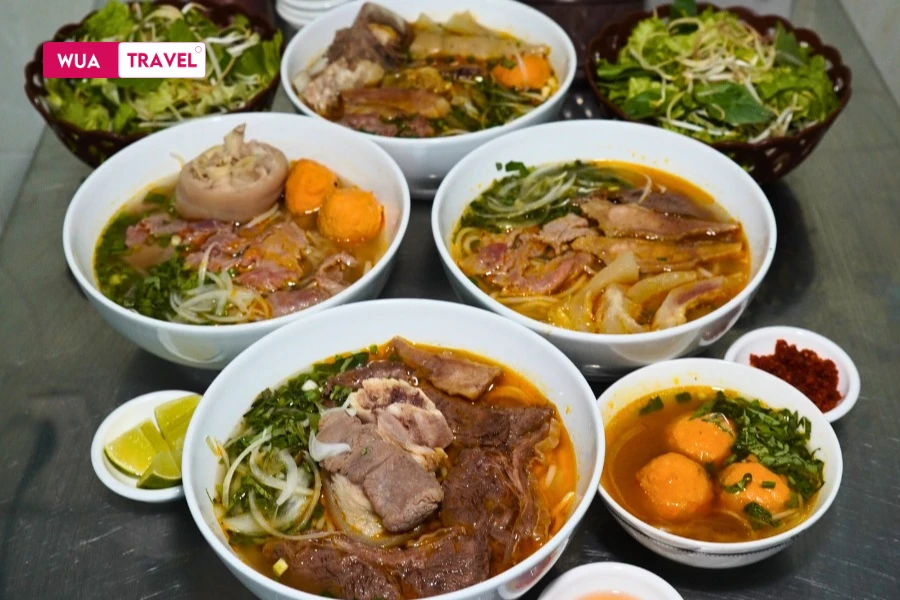
Stay Safe During the Rainy Season
Even though August rain doesn’t last all day, it can still disrupt your schedule if you’re not prepared:
- Check the weather forecast every morning: I often checkAccuWeather or Windy, especially if you go trekking or island touring.
- Make a backup plan: If the main plan is an outdoor tour, always have a backup plan.museum, spa, café, shopping mallso as not to “miss the day”.
- Be careful when moving in the rain: Avoid riding a motorbike on mountain roads (Sapa, Ha Giang) when it rains heavily, because it is very dangerous and slippery. If you have to ride, choose an experienced driver and use a manual transmission motorbike instead of a scooter.
- Keep the device dry: Use waterproof bags for your phone, passport and wallet – especially usefulIf you travel by boat (Mekong Delta, Phu Quoc, Ha Long).
My final advice: Don’t let the weather discourage you. With careful preparation and a flexible mindset, August travel can be not only memorable – it can also be the perfect time to enjoy a Vietnam that is both vibrant, pristine and full of surprises.
August Festivals & Events
August in Vietnam is not only a harmony of sunshine, rain and nature, but also a time when long-standing cultural values are recreated through festivals, rituals and community events. If you are looking for a travel experience that is not only beautiful but alsohave depth, then this is the ideal month to feel the spiritual breath, art and cuisine of Vietnam.
Traditional Festivals
Among Vietnam’s many traditional festivals, Vu Lan holds a special place in the hearts of locals. Celebrated on the full moon of the 7th lunar month, it’s a time for remembrance, gratitude, and spiritual reflection.
Vu Lan Festival (Full Moon Festival of the 7th lunar month)
Usually falls in mid-August,Vu Lanis a great holiday with deep spiritual value, showing filial piety and gratitude to ancestors.
You will see the sceneTemples are full of lanterns, smellThe scent of incense lingers in the air, and the children pin roses on their chests – red for living parents, white for deceased ones.
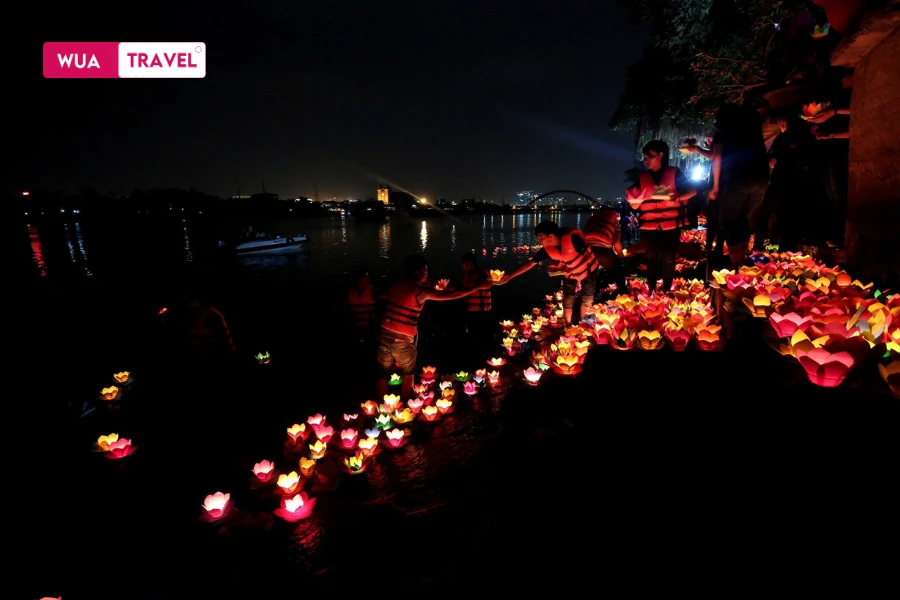
I once went to Giac Lam Pagoda (HCMC) on this occasion – the moment of seeing thousands of candles floating on the water, each candle representing a prayer – really calmed my heart.
Mid-Autumn Festival
Held at the same time as Vu Lan, this ceremony has a nuanceBuddhism mixed with folk beliefs, especially popular in the North.
You may come across rituals release animals, worship wandering souls, or join the chanting and candle lighting sessions at major temples such as Tay Ho Palace (Hanoi) or nThien Mu Pagoda (Hue).
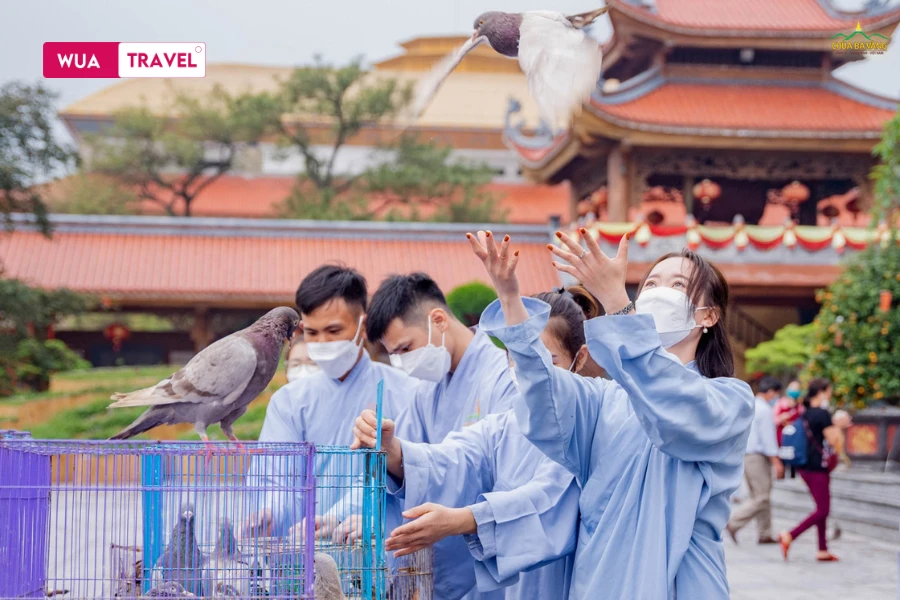
Local festivals
Some provinces still organize traditional village festival in August – such as the fishing festival in coastal areas, the rice harvest festival in the Northwest highlands. This is a precious opportunity to witness folk rituals, traditional dances and folk games.
Cultural and entertainment events
Among Vietnam’s many cultural events, few are as grand and poetic as the Hue Festival. Held in even-numbered years, it transforms the ancient capital into a living stage of heritage and art.
Hue Festival (if it falls on an even year)
If you come to Hue in the year of the festival Hue Festival(usually held in June or August depending on the year), then prepare for an immersive journey inRoyal music, traditional ao dai, lion dance, water puppetry and contemporary art exhibition.
I still remember the sparkling lights on the Perfume River on opening night, when hundreds of boatsFlowers float amid the sound of ceremonial music and the resounding sound of festival drums.
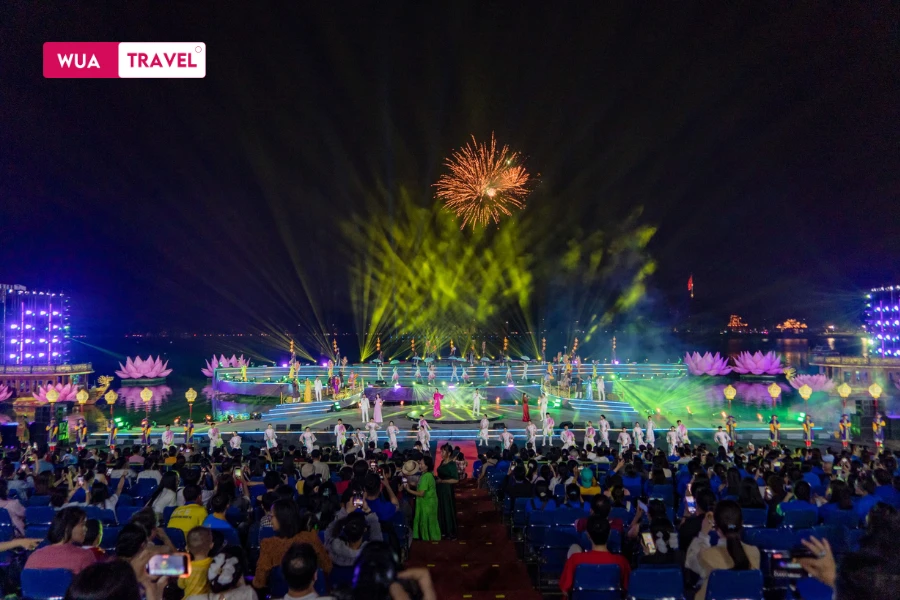
Beach parties & music events
Coastal cities likeDa Nang, Nha Trang, Phu Quocoften organizes outdoor music events,DJ show, beach party or coastal food festival. These events are not overly promoted, but are extremely vibrant and engaging – especially if you enjoy an international atmosphere mixed with local culture..
Street Food Festival
Some centerstravel sound likeHoi An, Ho Chi Minh City, Hanoi organization street food fairon the weekend of August, with dozens of specialty stalls from many regions. You can not only enjoy delicious food but also experience how to prepare it.n directly, interact with sellers through local stories.
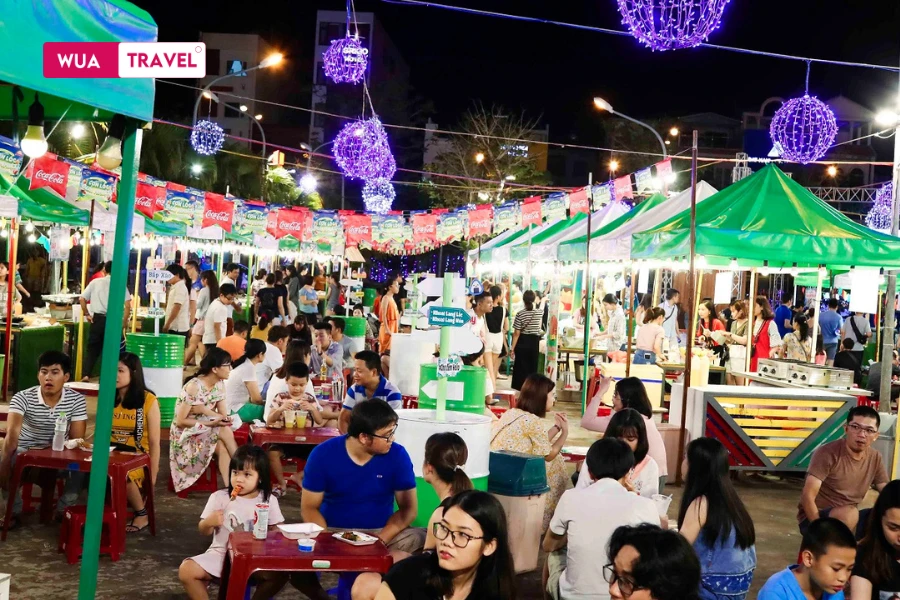
If you come to Vietnam in August, don’t just look up to the sky to see if it’s raining or sunny. Listen to the temple bells in the Vu Lan season, immerse yourself in the local festival atmosphere, and feel the beauty of a thousand-year-old culture quietly reviving in every street corner, every meal, and every street light yeah
Suggested 7–10 day itinerary to explore Vietnam in August
With 7–10 days in hand, you can experience the most typical slices of Vietnam – from the high mountains of the Northwest, the wonder bays, the ancient heritage town to the peaceful river region. Below are 3 sample itineraries suitable for August – each itinerary has its own highlights and is optimized to avoid harsh weather, making the most of travel time and experiences.
Option 1: North – Central (7 days)
For those who love majestic natural scenery and long-standing cultural heritage
- Day 1–2: Hanoi
Visit the Old Quarter, Temple of Literature, Hoan Kiem Lake, try street food and experience egg coffee in a small shop hidden on the 2nd floor of Nguyen Huu Huan street
Note: Avoid outdoor activities from 11am–3pm, spend time relaxing at museums or spas. - Day 3–4: Sapa
Trekking Cat Cat village, Ta Van or climbing Fansipan by cable car. Enjoy salmon hotpot, corn wine, and watch the sunrise among the terraced fields of ripe rice
Note: August often rains in the evening – so trek in the morning and bring a light raincoat. - Day 5–6: Ha Long or Cat Ba
Choose a 1-night cruise or day tour through Ha Long Bay/Cat Ba. Watch the sunrise over the bay, try kayaking or visit a floating fishing village
Tip:Book tour early in the morning to avoid sudden rain in the late afternoon. - Day 7: Hanoi – Departure
Shop for souvenirs at Dong Xuan market, relax with a bowl of pho before heading to the airport.
Option 2: Central – South (10 days)
Suitable for those who love the blue sea, heritage and vibrant life
- Day 1–2: Da Nang – Hoi An
Swimming at My Khe beach, taking the Ba Na Hills cable car early in the morning, walking around Hoi An ancient town with lanterns at night, enjoying Cao Lau and white rose cake. - Day 3–4: Hue
Visit the Imperial City, Thien Mu Pagoda, Minh Mang Tomb. Take a boat ride on the Perfume River in the evening, listen to Hue folk songs and feel the unique tranquility
Note:Very sunny at midday – plan to go early or late afternoon, don’t forget a wide-brimmed hat and sunscreen. - Day 5–6: Ho Chi Minh City
Explore Notre Dame Cathedral, Central Post Office, Nguyen Hue walking street. In the evening, stroll Ben Thanh night market or rooftop bar to watch the skyline. - Day 7–8: Mekong Delta (Can Tho or Ben Tre)
Experience floating markets, fruit gardens, and ancient houses in the South. Cruising on the river at dawn is one of the moments not to be missed
Suggest: You should stay at the homestay for 1 night to fully experience the atmosphere of the river region. - Day 9–10: Phu Quoc
Relax on Sao beach, dive at Hon Mong Tay, enjoy seafood at Dinh Cau night. If it rains, you can spend time at the spa or visit the fish sauce factory, pearl factory.
Option 3: Vietnam Highlights (10 days)
Typical Itinerary – Combining North, Central and South in just 10 days
- Day 1–3: Hanoi – Sapa
Start with a classic itinerary: the thousand-year-old capital and the Northwest mountains, where ethnic minority cultures are still alive every day. - Day 4–5: Ha Long
Cruise through natural wonders, enjoy fresh seafood and wake up to the vast ocean and sky. - Day 6–7: Hoi An – Da Nang
Take a direct flight from Hanoi to Da Nang, combine a beach vacation and explore the poetic old town. Cycling through Thanh Ha pottery village or swimming at An Bang beach are very “Hoi An” experiences. - Day 8–10: Ho Chi Minh City – Cu Chi
Immerse yourself in the modern life of Vietnam’s most dynamic city. On the last day, you can visit Cu Chi Tunnels, where a glorious chapter of history is kept – before saying goodbye to the S-shaped country.
General notes:
- Always check the weather forecast daily to adjust your plans.
- If you don’t mind the rain, August is still an ideal time to explore Vietnam.– because Beautiful nature, not too many international visitors, reasonable cost if planning early.
FAQ Vietnam In August
August is often overlooked when planning a trip to Vietnam, but should it be? Before diving into tips and regional highlights, let’s start with one of the most common questions travelers ask—and one that might surprise you with the answer.
Is August suitable for traveling to Vietnam?
Yes – if you choose the right region and plan your itinerary wisely. The north and central regions still have sunny days, while the south, although rainy, is usually short and easy to adapt to. August travel can be memorable if you’re willing to be flexible.
What should I prepare for my August trip?
Wear light, airy clothing such as cotton or linen; non-slip shoes/sandals; a thin raincoat or foldable umbrella; and high SPF sunscreen. Don’t forget cold medicine, mild stomach medicine, and rehydration solution if you’re traveling a lot.
How to stay healthy when traveling in the rainy season?
Keep yourself and your belongings dry, especially after being in the rain. Avoid eating outside on humid days. Drink plenty of water, and carry a quick-dry towel or waterproof zip-top bag for personal belongings.
Should I go on a tour or travel on my own in August?
If you like flexibility, you can be self-sufficient – but should book service at least 2–3 weeks in advance because this is the domestic peak season. If you travel to mountainous areas or places with few services (Sapa, Mu Cang Chai), a package tour will help you save time and handle rain better.
Is it expensive to travel in August?
Prices are generally 20–30% higher than in low season (October–December), especially for domestic flights and beach hotels. However, there are still great deals to be had if you book early and avoid weekends.
How many days should I spend in each area?
- North:3–4 days (Hanoi, Sapa or Ha Long)
- Central region:4–5 days (Hoi An, Hue, Da Nang)
- Southern:3–4 days (HCMC, Mekong or Phu Quoc)
Is it safe to travel alone in August?
Yes – but be careful in the rain (slippery roads, limited visibility). Always Share schedule with loved ones, and use reliable public transportation or ride-hailing apps in major cities.
Should I go swimming in August?
It is possible to swim in the sea in the Central and Southern regions – where the weather is still quite stable. However, Always check the weather forecast and watch for signal flags on the beach.: red flag means no bathing, yellow flag means bathing with supervision.
CONCLUSION
Despite being known as the rainy month, August still opens up memorable journeys if you know how to choose your destination, arrange a smart schedule and prepare carefully. From Sapa terraced fields, Hoi An blue sea to Saigon cuisine in the rainy season – each place has its own way to touch your emotions.
For me, traveling to Vietnam in August is not perfect – but it is precisely those imperfections that make the experience complete and real. If you are willing to step out and let Vietnam surprise you in its own way, August will be a worthwhile trip.
